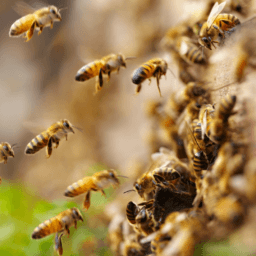
June is a pivotal month in the beekeeping calendar, marked by high activity within the hive as colonies reach their peak. Understanding this mid-year dynamic is essential for both seasoned and beginner beekeepers.
Bee Colony Dynamics in June
Peak Colony Activity
Up until June 21st, the queen bee's egg-laying is at its highest due to the abundance of pollen and nectar. This period …

Whether you're a novice just starting your beekeeping journey or an experienced apiarist gearing up for the honey harvest, having the right tools and knowledge is crucial for success. In this blog, we’ll delve into the essential tools and techniques for an efficient honey harvest, ensuring that beekeepers of all levels can maximize their yield and minimize stress for both …

Embarking on your beekeeping journey is an exciting adventure filled with anticipation, learning, and, of course, bees! Whether you're drawn to beekeeping for the love of honey, the desire to support pollinator populations, or the simple fascination with these complex creatures, starting on the right foot is crucial. Dadant Beekeeping is here to guide you through setting up your first …

As the warmer weather of spring approaches, beekeepers everywhere are gearing up to ensure their hives are ready for the new season. At Dadant, we understand the importance of spring hive maintenance in fostering healthy and productive bee colonies. That's why we've compiled essential tips to guide you through inspecting your hives and updating your equipment for optimal beekeeping …

As the days grow shorter and the leaves start to change colors, beekeepers worldwide know that it's time to shift their focus to preparing their honeybee colonies for the upcoming winter. One essential aspect of this preparation is fall feeding. In this blog post, we'll explore why feeding your bees in the fall is crucial for their survival and how …

As autumn paints the landscape with vibrant hues and temperatures begin to drop, beekeepers across the country turn their attention to fall feeding. Preparing honeybee colonies for the winter is a critical task, and one of the most important aspects of this preparation is providing adequate fall feeding. In this blog post, we will explore the when, what, and how …

Welcome to the fascinating world of beekeeping! As a beginner, one of the most essential skills you'll need to develop is frame reading. It's the art of interpreting the story your bees are writing on the frames within their hive. Whether you're starting with package bees on new foundation, dealing with a swarm, or managing a nucleus colony, understanding how …

Beekeepers often passionately discuss hive types, materials, and even the orientation of brood frames. However, one aspect that is often overlooked is what the hive is actually sitting on – the hive stand. Though it may seem insignificant, a well-designed hive stand serves multiple purposes and offers several benefits that enhance beekeeping practices.
The primary functions of a hive stand include:
…







